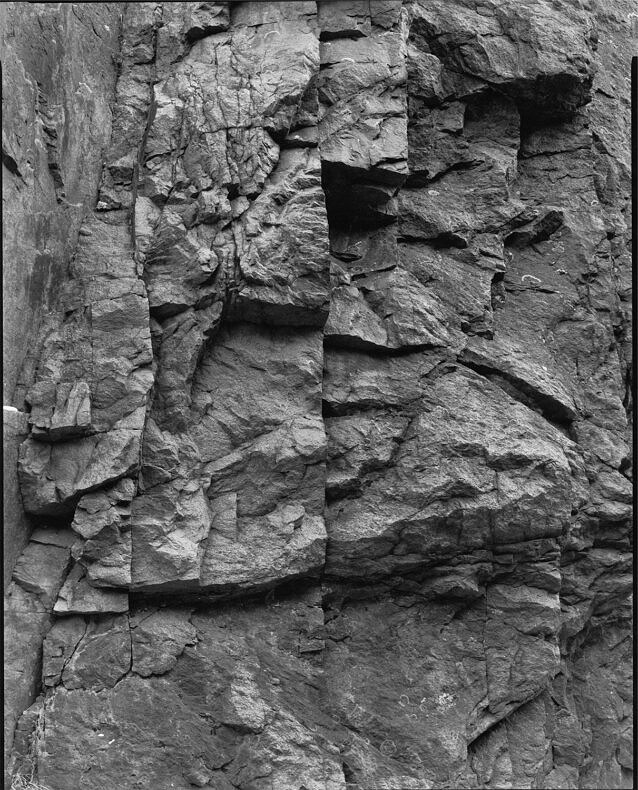
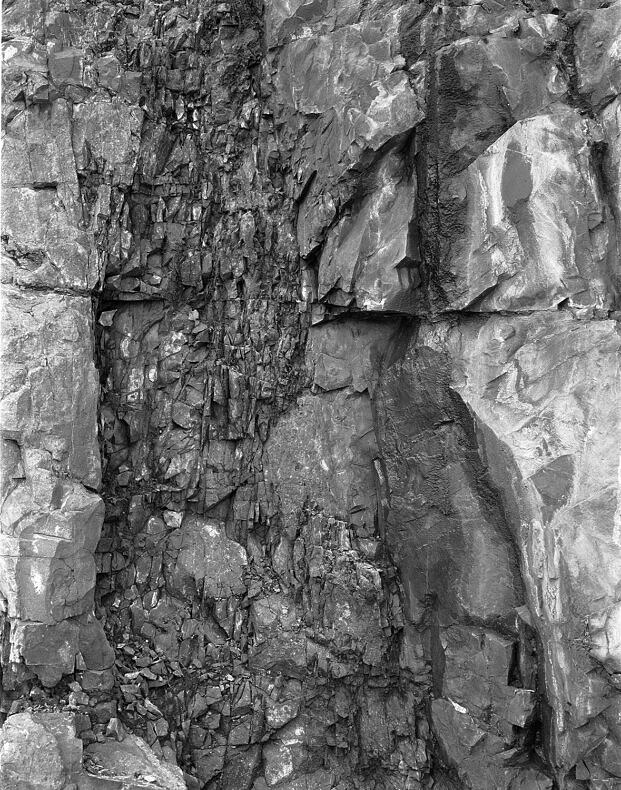
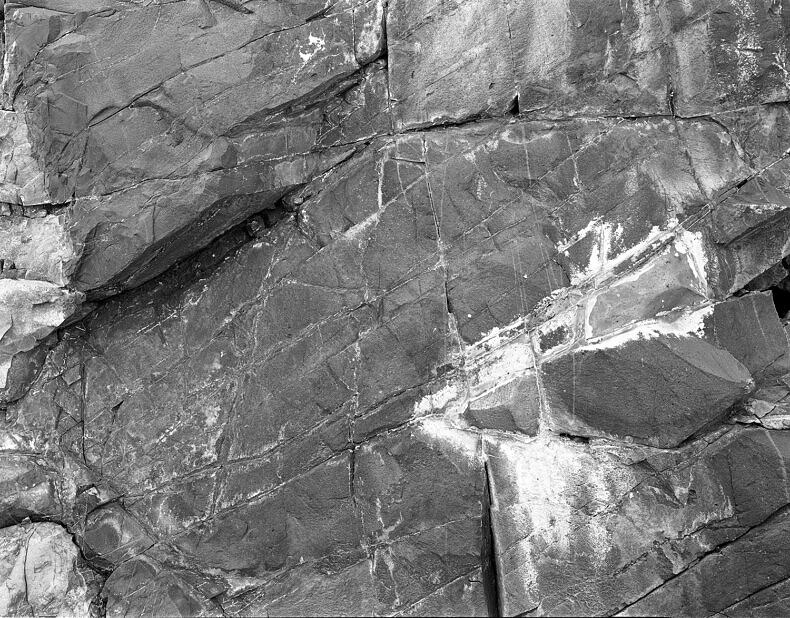
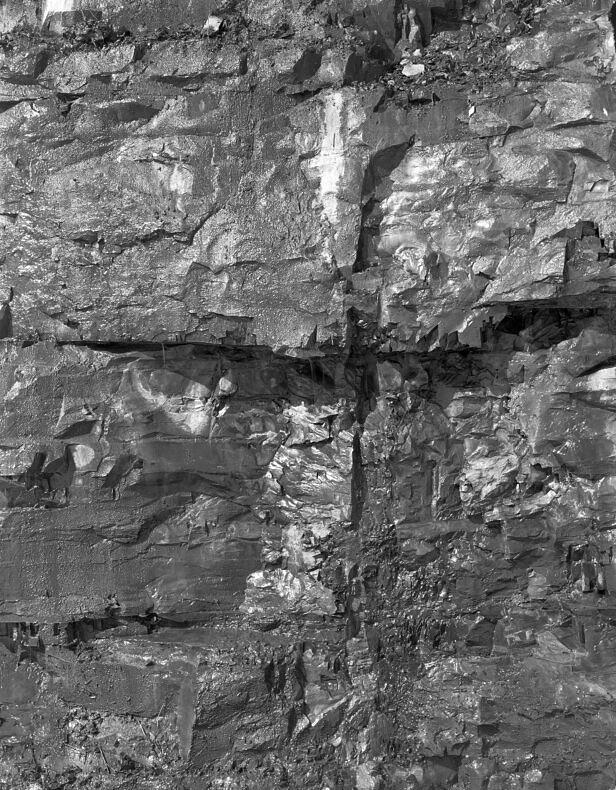
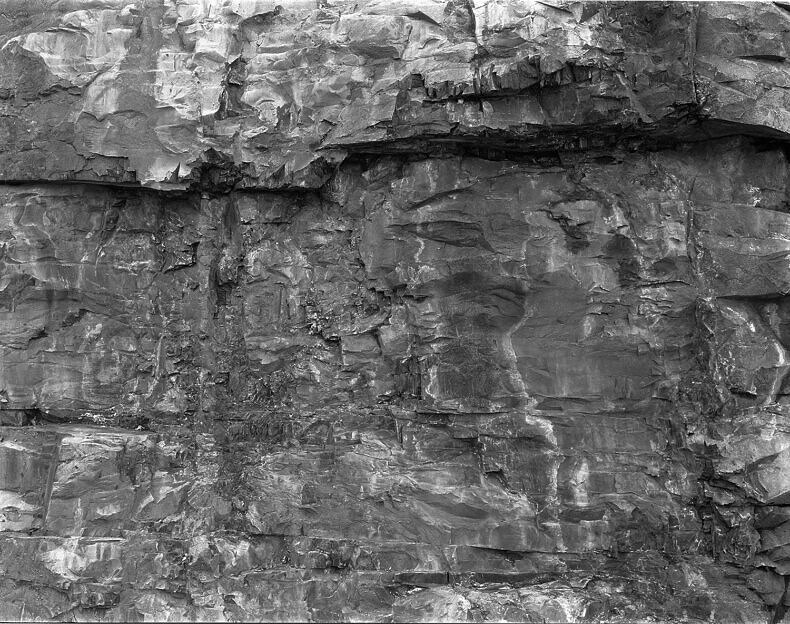
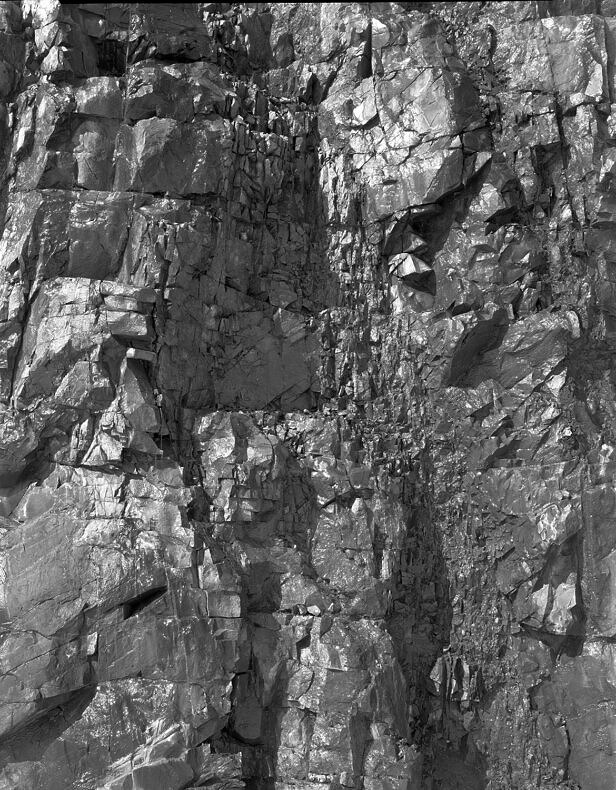
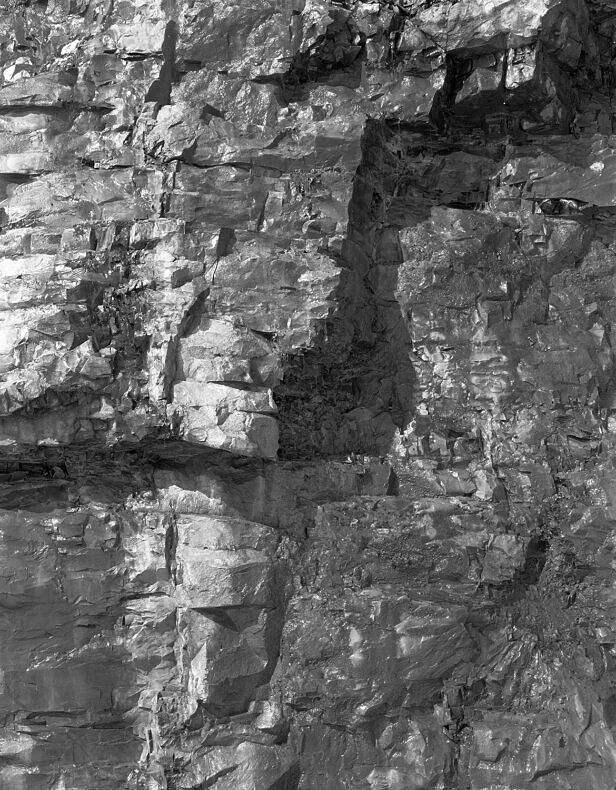
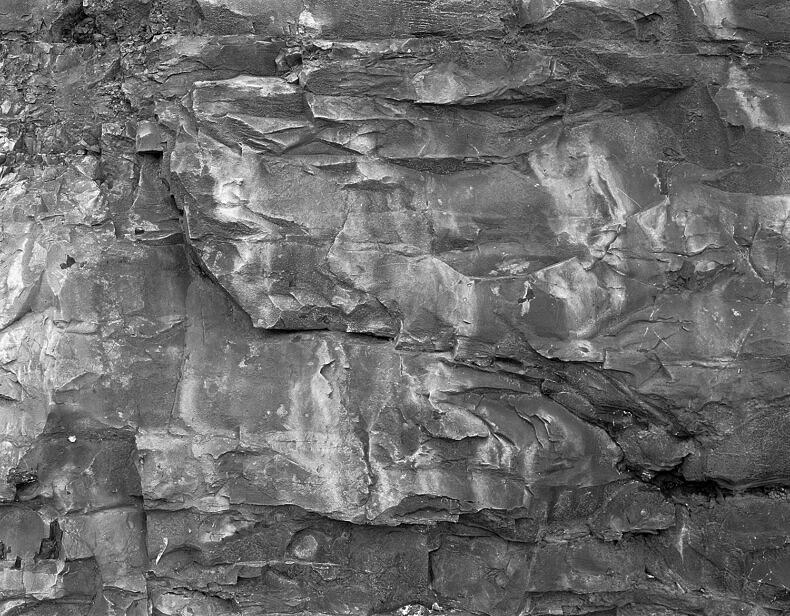
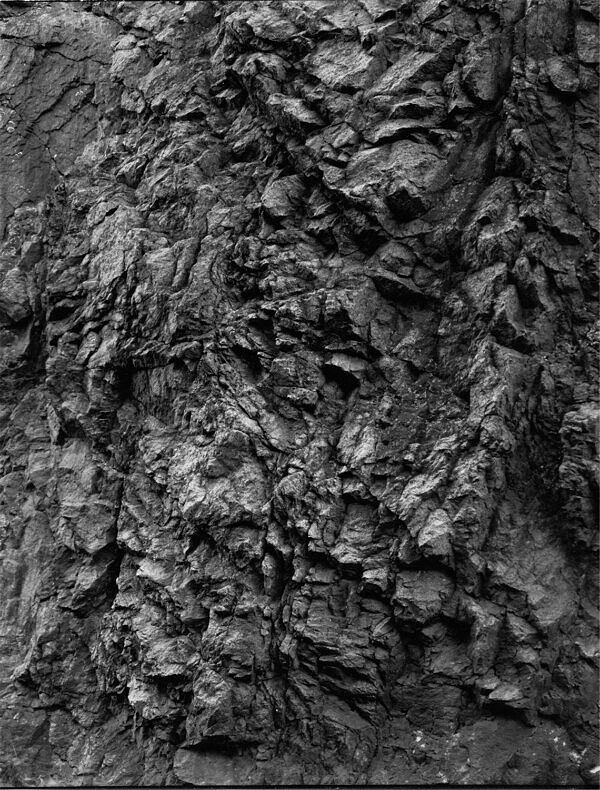
In Western art, representing landscape typically involves drawing a boundary between culture and nature. Even work that shows the human-altered environment often follows historical conventions linking landscape to the depiction of unaltered nature. Cuts explores and challenges these conventions. I think of these photographs as landscapes, although it’s not easy to tell whether the sites they represent are natural or human-made, and they don’t fit typical definitions of the landscape view.
The rock cuts in these images are the result of blasting with dynamite in order to build infrastructure such as railway lines, roads and reservoirs. The fracture patterns created by such explosions are uniquely ‘unnatural’ – traces of a powerful intervention brought about by human activity rather than natural processes. The living rock that is exposed by blasting would otherwise have remained hidden for millions of years.
There are no horizons in these photographs, no deep space, no easily identifiable scale – they resist the order that the camera seeks to impose. And although they don’t resemble conventional landscapes, they express a similar ambivalence towards our present relationship to the planet and its ecology. Rock is a primordial element, its timeframe utterly unrelatable to that of a human lifespan. Yet this duration can be ended in an instant. I think of the photographs in Cuts both as celebrations of human enterprise, and monuments to acts of historical violence.
All images ©Eugenie Shinkle